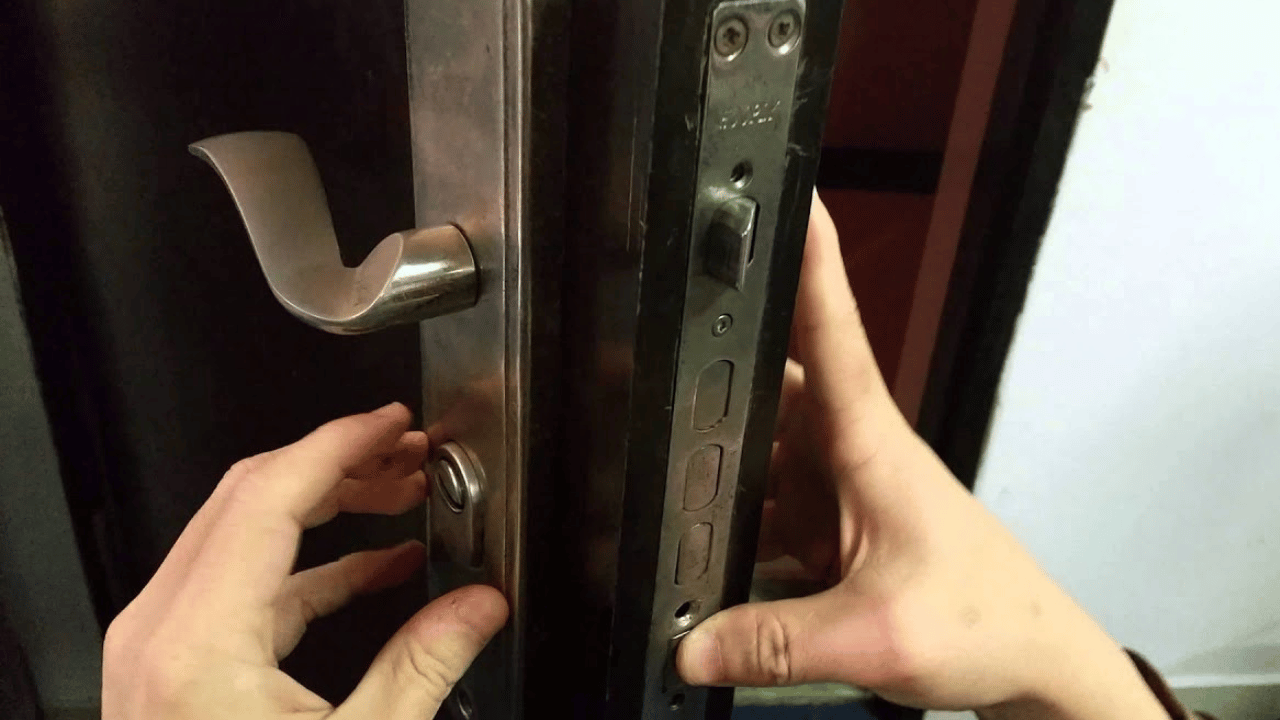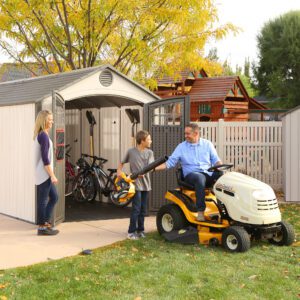
To disable a storm door lock, locate the lock cylinder on the handle and turn it counterclockwise to unlock the door.
Reasons To Disable A Storm Door Lock
Disabling a storm door lock may be necessary. One reason is the difficulty in accessing the house. If the lock is old or damaged, it may malfunction frequently, causing inconvenience. Another concern is safety during emergencies.
A functioning lock can hinder quick entry or exit during a fire or other urgent situation. Therefore, it’s important to know how to disable a storm door lock when needed. Doing so can ensure easy access to your home and enhance safety measures.
Assessing The Storm Door Lock
Assess the storm door lock to identify potential issues before simplifying the disabling process. By examining the lock mechanism, you can understand how it functions. Begin by inspecting the key and latch to ensure they are not damaged. If the lock is sticky or difficult to turn, use a lubricant to ease the mechanism.
Check for any loose screws or misaligned parts that may be causing the lock to malfunction. Once you have assessed the lock, follow the manufacturer’s instructions to disable it. Remember that disabling the lock should only be done if necessary, as a functioning lock provides security and protection.
When disabling the storm door lock, take your time to avoid causing any damage.
Safe Methods To Disable A Storm Door Lock
Gathering the necessary tools is essential in disabling a storm door lock. Carefully disassemble the lock components to gain access to the locking mechanism. By temporarily disabling the locking mechanism, you can effectively address any issues with the storm door lock.
It is important to ensure the safety of your home and belongings by taking proper precautions while disabling the lock. The process requires attention to detail and precision to avoid any damage to the door or lock. With the right tools and methodical approach, you can successfully disable a storm door lock and proceed with any necessary repairs or replacements.
Alternative Solutions To Disable A Storm Door Lock
Alternative solutions for disabling a storm door lock include installing a replacement lock or seeking professional locksmith assistance. You can regain control over your storm door’s security by installing a new lock. However, if you need more confidence in your DIY skills, it’s best to consult a locksmith who can efficiently handle the task.
Additionally, consider implementing other security measures for your storm door to enhance protection. This can include reinforcing the frame or adding extra bolts. Prioritizing the safety of your home is crucial, so explore all available options to address any issues with your storm door lock.
Ensuring Safety And Security Throughout The Process
Ensuring safety while disabling a storm door lock is crucial. Precautionary measures must be taken to avoid any damage. Securing the door properly in its disabled state is essential for maintaining security. Follow these steps to disable the lock without any hassles.
Firstly, locate the lock mechanism and identify the type of lock present. Next, gather the necessary tools, such as a screwdriver or key, depending on the lock type. Carefully remove any screws or bolts securing the lock in place. Take your time and be gentle to avoid any door or lock damage.
Finally, secure the door using alternative methods like a chain or padlock to ensure no unauthorized access. These guidelines will help you disable a storm door lock effectively and safely.
Reversing The Disablement
Disabling a storm door lock involves reversing the disablement and reassembling the lock components. Once the components are correctly reassembled, the lock’s functionality can be restored. It is important to carefully follow the instructions provided by the manufacturer or a professional locksmith to ensure proper reassembly.
After the lock has been reversed and reassembled, it is crucial to test its functionality to ensure it works properly. This can be done by inserting the key into the lock and turning it to ensure that the lock mechanism engages and disengages smoothly.
Regular testing and maintenance of the lock will help ensure its longevity and effectiveness in providing security for your storm door.
Frequently Asked Questions For How To Disable A Storm Door Lock
How Do You Open A Locked Storm Door From The Outside?
Use a key or enter the correct passcode to open a locked storm door from the outside.
Why won’t my Storm Door Unlock?
A storm door may not unlock due to a jammed lock mechanism or bent key. Assess and fix any faults to resolve the issue.
How Do I Stop My Door From Locking?
To prevent your door from locking, follow these steps:
1. Ensure the door latch is aligned correctly and functioning.
2. Lubricate the door lock mechanism to avoid sticking.
3. Check for loose or damaged components and repair or replace them as necessary.
4. Consider installing a doorstop or blocker to prevent accidental locking.
How Do You Remove A Cylinder Lock From A Security Door Without A Key?
To remove a cylinder lock from a security door without a key, follow these steps carefully:
1. Insert a screwdriver into the small hole in the cylinder lock.
2. Turn the screwdriver counterclockwise to release the lock mechanism.
3. Pull the cylinder out the door using pliers or by hand.
4. Replace the cylinder with a new one if necessary.
Conclusion
Removing a storm door lock may seem daunting, but it can be done easily with the right tools and knowledge. Following the step-by-step instructions outlined in this blog post, you can safely disable your storm door lock in no time.
Remember to carefully inspect the lock mechanism and note any details unique to your door. This will ensure a smoother process and minimize any potential damage. Once the lock is disabled, you can enjoy the benefits of increased accessibility and convenience.
Whether you want to replace or remove a faulty lock temporarily, these instructions will guide you through the process. So don’t hesitate to gather your tools and give it a try!








